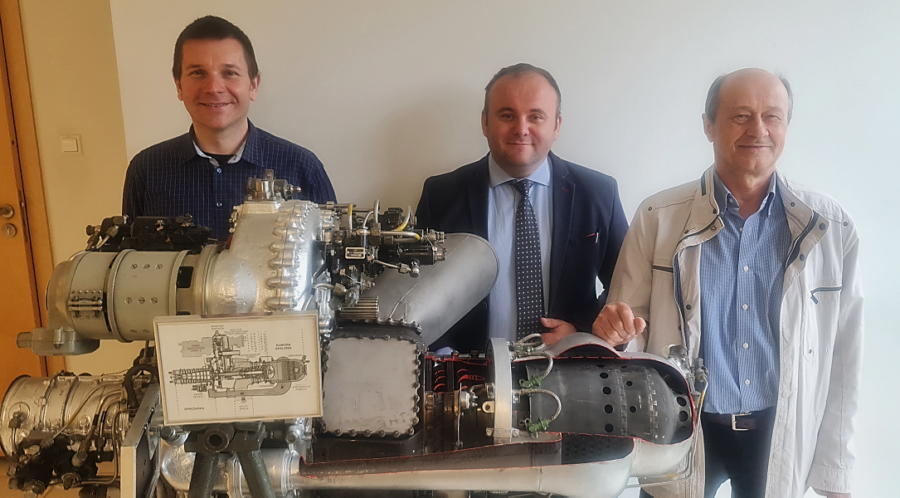
PATENT
HOW TO MAKE AIRPLANE ENGINE PARTS MORE DURABLE
5 September 2022
text: Małgorzata Kłoskowicz
e-mail: malgorzata.kloskowicz@us.edu.pl
Patents of the University of Silesia
The article is part of a series presenting the results of research conducted by scientists associated with our University. They are co-authors of over 600 inventions, utility and industrial models, and trademarks.
The scientists from the University of Silesia proposed a solution to improve the production process of vanes used in the construction of turbines for airplane engines. Thanks to the invention, those elements will be more durable, which will contribute to extending their service life and decreasing the costs of engine maintenance.

The vanes mentioned above are made in a monocrystalline form using nickel-based superalloys. This is a durable material characterised by exceptional mechanical properties. It is resistant to high temperatures as well as aggressive environments. Therefore, it is not surprising that this material proves to be highly suitable in the manufacturing of airplane engine components that are exposed to mechanical damage, temperatures of 1,300–1,400°C, and the effects of many adverse chemical agents such as the reactive gases produced in the engine combustion chamber. The durability of vanes depends not only on the material used, but also on its shape, thermochemical processing, and the techniques of quality control used during the production process.
The scientists from the University of Silesia focused on one of the stages of production. As it turned out, many defects impacting the strength and chemical and heat resistance of castings occur in the beginning stages of manufacturing, i.e. during the directional solidification of castings using the Bridgeman method. Casting stresses of the crystal lattice can occur in the semi-finished products obtained as a result of this process, causing degradation of the heat-resistant and refractory protective coatings applied to the castings in one of the last stages of production. This in turn impacts the quality and durability of vanes.
A technique to determine the places where the stresses are likely to occur, designed by Robert Paszkowski, PhD Eng., Włodzimierz Bogdanowicz, PhD, DSc, Associate Professor, and Jacek Krawczyk, PhD, from the Faculty of Science and Technology of the University of Silesia, could be a solution to this problem. To achieve the desired outcome, the scientists used X-ray diffraction topography, allowing to monitor large castings elements, as well as whole vanes, without drastic interference to the structure of the part itself. Indicating places in castings where protective coating damages can occur at a later stage will allow to carry out precise modifications to the production process with the aim of eliminating possible stresses. Thanks to the invention, it will be possible to reduce the number of defects occurring during the early stage of production, before the protective coatings are applied, improving the protective properties of the final product. The solution is protected by patents.

Authors of the patent from the research group “The technology and characteristics of monocrystalline vanes of airplane turbines”. From the left: Jacek Krawczyk, PhD, Robert Paszkowski, PhD Eng., and Włodzimierz Bogdanowicz, PhD, DSc, Associate Professor (group leader). | photo from the private archives of Robert Paszkowski, PhD Eng.





